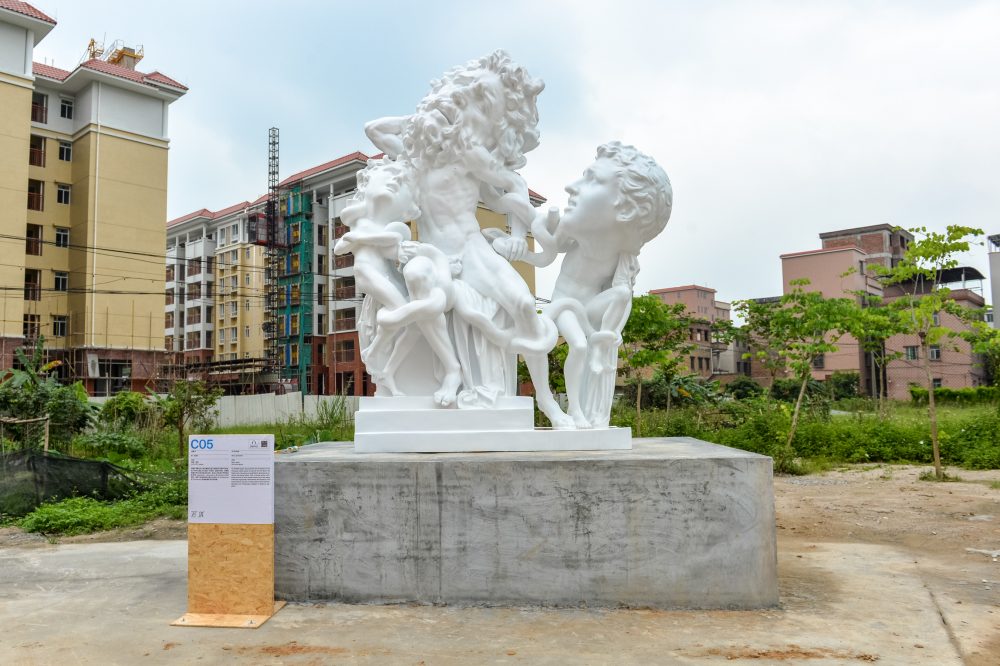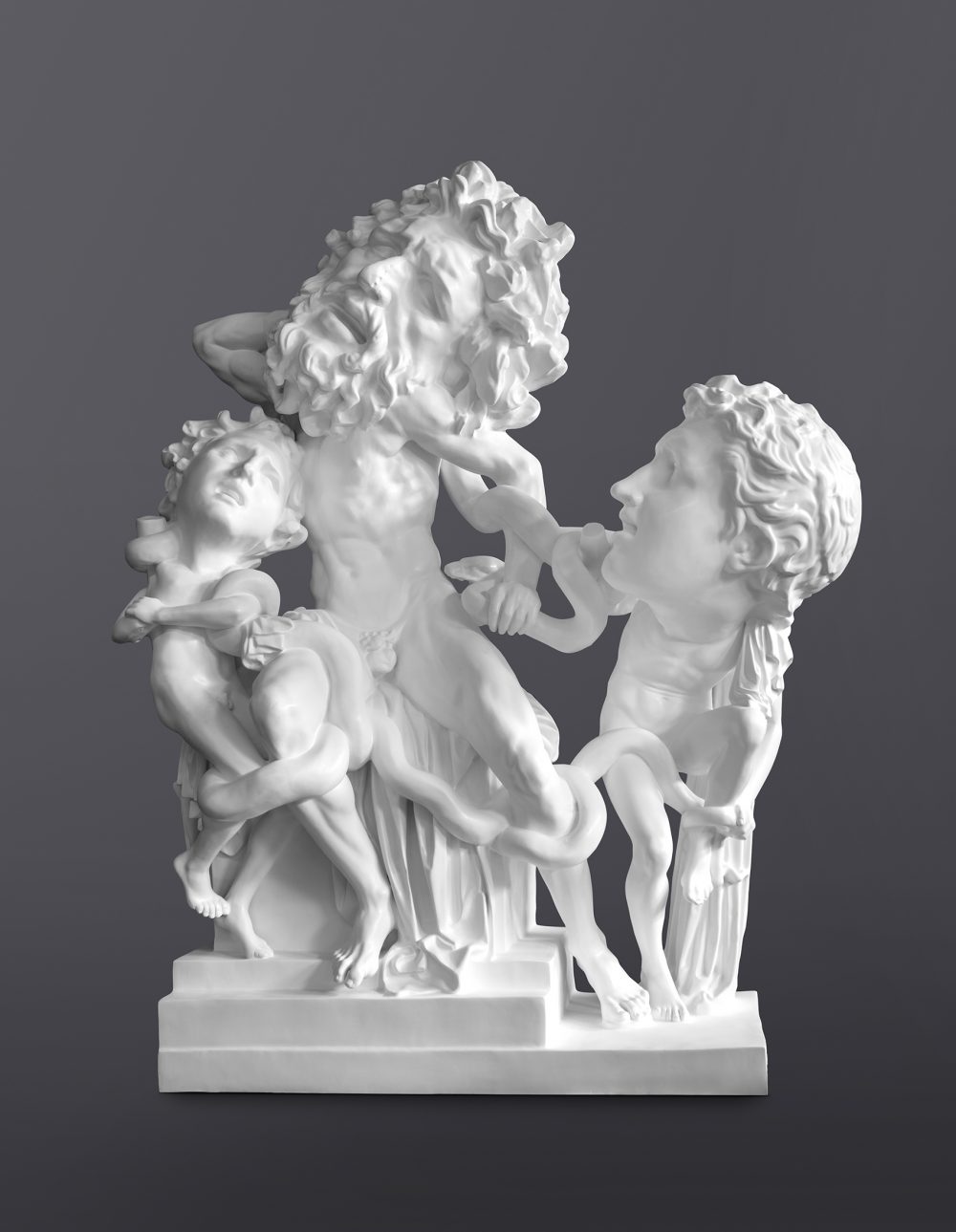-
Guangzhou, China
Extreme Mix – 2019 Guangzhou Airport Biennale, curated by Jiang Ning and Lu Mingjun with Xu Zhen and Fan Bo as art consultants, will officially open to the public on June 1 at Guangzhou Wings – Airport Cultural Town, a rising community of art and culture that builds upon Fenghe Village, Renhe Town of Guangzhou’s Baiyun District. The contemporary art feast will run for three months before it wraps up on August 31.
The biennale gathers 81 artists/collectives from both home and abroad, putting on display more than 100 pieces/groups of artworks that cover various genres like painting, installation, sculpture, videography and performance. Among them, more than 40 are specially commissioned for the exhibition by building on the exclusive local cultural landscape. The event will also debut 6 pieces/groups of large-scale installations by celebrated artists like Olafur Eliasson and Yayoi Kusama that have never been exhibited in China before. In addition, several pieces/groups of artworks will remain at Fenghe Village as a permanent scene, empowering contemporary art to involve itself with the community and the villager’s day-to-day life.
For the inaugural edition of the Guangzhou Airport Biennale, in hopes of creating a locally-based “cultural hybrid” and unique landscape, its curatorial team is committed to exploring a brand-new “biennale plus” mode, which promotes the organic integration between regional folk culture and contemporary art .
Extreme Mix: Empower the cultures in rural area with contemporary art
Picking “Extreme Mix” as the theme of the first Airport Biennale, curator Lu Mingjun notes: “Thanks to its suburban location and unique ecology, the Airport Cultural Town stands out as a ‘cultural hybrid’ in China’s urbanization process”. Being both a community with rich traditional culture and China’s first portal city that opened to the globe, Guangzhou, the city where the Airport Biennale will be held, is also featured by its hybridity.
Lu continues to point out that ‘hybridity’ has been a common discourse and feature in the global contemporary art scene, which has also risen to become a cultural logic of globalization. This is the reason why Lu hopes to re-convey avant-garde cultural dynamics against today’s dwindling globalization and mounting barriers by presenting Extreme Mix.
Jiang Ning, one of the curators of the Biennale, had a part of his life spent in Guangzhou’s Renhe Town during the 1990s. Compared with China’s economic take-off over the past three decades, many Chinese villages like Renhe Town have, however, been revealing an increasingly impoverished state regarding their cultural life. Therefore, Jiang believes that the Airport Biennale will help to instill cultural confidence into Renhe Town in the best possible approach. He says: “We hope that the biennale can help foster a cultural and artistic atmosphere for Renhe Town, make a positive impact on the locals’ way of thinking and transforms this place into a cultural landmark where art events keep taking place.”
Innovation of Exhibition Modes: A “biennale plus” approach
Cultural Inheritance: Respecting local customs and natural environment
Extreme Mix – 2019 Guangzhou Airport Biennale is also committed to exploring a new “biennale plus” mode – it offers four theme programs, namely “Site-specific Spatial Intervention”, “Creative Bazaar”, “Traditional Culture” and “Airport Elements”, to fully showcase the binding power of public art. At the same time, it also embraces a “3+365” timeline to ensure a truly long-lasting art event – “3” represents the months that the exhibition is set to last and “365” symbolizes the plans of art institutions, such as ShanghART Gallery, MadeIn Company and Zhang Ding Control Club, to sustain their presence at Renhe Town for at least a year. It demonstrates the curatorial team’s unremitting efforts to synergize local and non-local art institutions with the purpose of establishing an academic and cultural atmosphere for contemporary art in Guangzhou.
Throughout the installation process, the biennale bears in mind that the natural and cultural landscapes of Renhe Town shall not be subjected to any forced changes. It seeks to preserve the indigenous culture of Lingnan Area, including local sceneries, customs and dialects, while maintaining the integrity of artists’ creative threads. Given such a precondition that the right of local villagers shall be fully respected, the biennale has successfully stimulated a direct link between artistic creations and the features of local culture and space, which also renders a sense of continuum to these artworks.
Works by artists Fan Bo and Qiao Xiaoguang will be kept as permanent experienceable exhibits, while Bi Rongrong’s Ideal & Useless Space (II) not only further extends her exploration over retail space, but also uses a new form of landscape to metaphorize the long-term fermentation beneath the specific architectural façade of handshaking buildings. Other artists that have contributed to the renovation of Fenghe Village’s handshaking buildings include Ding Yi, Lu Pingyuan and Li Naihan.
Meanwhile, the biennale wishes to throw light on the value of contemporary art by incorporating it with local buildings and commercial industry by means of presenting site-specific artworks for renovated spaces, aiming to promote and diversify the local economy. For example, GOLD CAN MOVE THE GOD, a provocative installation by artist Zhang Ding, not only inherits the artistic and experimental attributes of his creative series, but also creates sustained commercial values for the town as the bar will continue to run in the future.
40,000m2 outdoor open space that presents artistic and cultural congregation for airport town
The majority of this year’s Airport Biennale will be hosted at the outdoor open space of Guangzhou Wings – Airport Cultural Town, where the curatorial team divides the more than 40,000-square-meter space into four area (A, B, C and D). The renovated Hongyi Ancestral Temple in Area A shelters works by celebrated artists; Area B stages around ten large-scale outdoor installations; Area C houses a concentration of site-specific installations, which belongs to the special curated “Site-Specific Spatial Intervention” program that takes the compatibility between artworks and space into consideration.
Area D is reserved for the biennale’s new media exhibits, where 14 new media spaces have been co-established by artists to renovate the village’s long delipidated houses. The contrast thus presented will not only impose visual impact upon the spectators, but also initiates contemplation and experimentation upon contemporary culture. Works from more than 30 artists, including Wu Juehui, Ge Yulu, Tatsuo Miyajima, Ryan Gander and emerging artist Steph Li, a former teamLab member will be on display. Exhibits installed at the new media area stands out by offering a young perspective into contemporary art forms, triggering new sensual experiences atop buildings that have witnessed the ups and downs of several generations.
The Airport Biennale will also present a special unit – “Fenghe Impression Exhibition” which features the cultural heritage of Fenghe village. Lingnan’s folk culture will be embodied through popular forms, creating a new linkage between the village and its historic heritage.
However, the Airport Biennale targets at not merely a short-lived art feast. It proposes disruptive and visionary imaginations that are well-aligned with local realities. In a macro-environment where art dynamics can be leveraged to revitalize regional economy, the biennale will take advantage of a mode that differentiates from other international art exhibitions. The unique concepts and organizational forms aim to establish a new, unique focal point that caters to the airport town’s history, function and characteristics.





